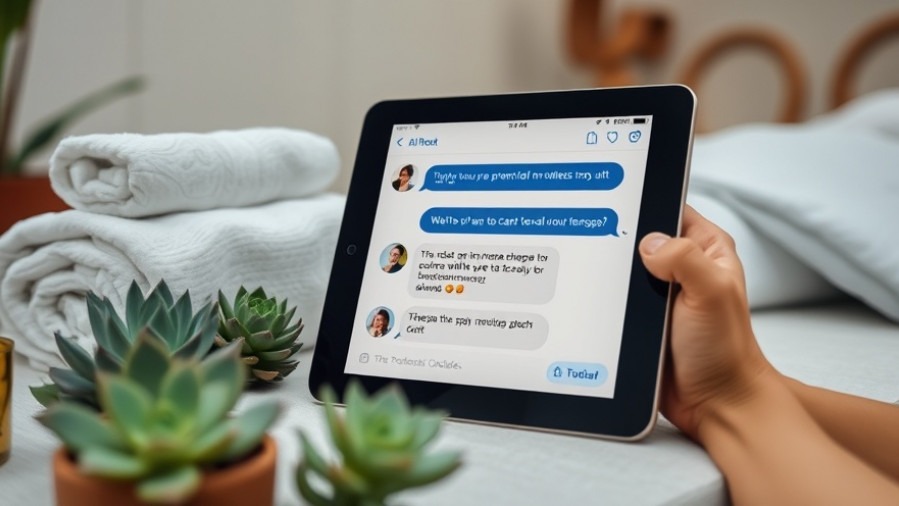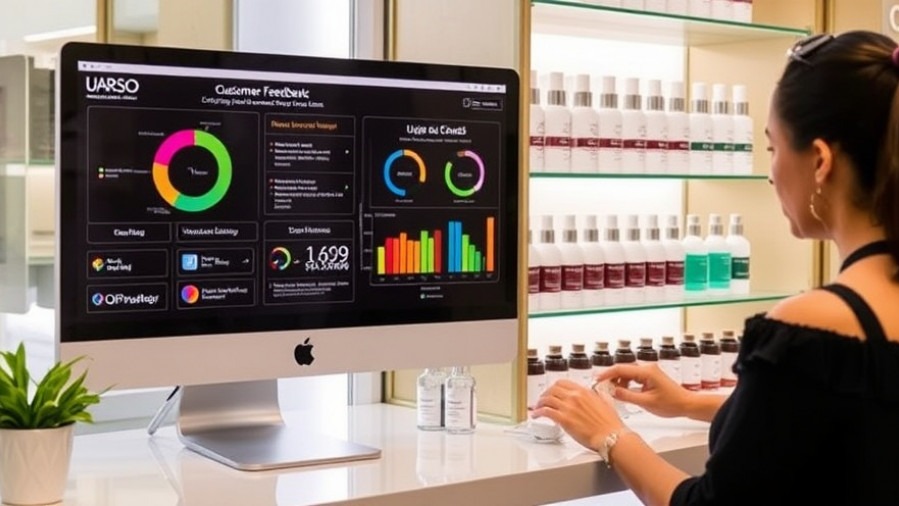
Unlocking Revenue Streams with Custom GPTs in the Spa Industry
In today’s fast-paced spa world, time is often your most valuable asset. Between booking appointments, managing staff, curating the perfect client experience, and staying ahead of wellness trends, it can feel like there’s never a spare moment left in the day.
But what if a new type of digital assistant could help you reclaim your time — and boost your revenue in the process?
That’s exactly what’s happening with the rise of custom GPTs — AI-powered tools designed to help spa professionals work smarter, not harder. They’re not here to replace the human touch that defines your spa’s success — they’re here to amplify it.
What Exactly Are Custom GPTs?
Let’s start simple. GPT stands for Generative Pre-trained Transformer — a form of artificial intelligence capable of understanding and generating human-like language.
When you customize a GPT, you train it to think and respond in ways that align specifically with your spa’s needs.
Think of it like creating your own in-house virtual assistant who never sleeps. It can answer client questions, write marketing content, help staff learn procedures, or assist in managing communication — all in your spa’s voice and tone.
For example:
A custom GPT could create personalized spa menus for each client based on their preferences.
It could instantly respond to common inquiries about services or pricing.
It could even act as a digital trainer for new hires, explaining treatment protocols and wellness philosophies in plain, friendly language.
While some people worry that AI produces generic or robotic results, the power of a custom GPT lies in the word “custom.” When built correctly, it reflects your expertise, your values, and the unique atmosphere of your spa.

Three Types of Custom GPTs to Transform Your Spa
There are endless ways to use custom GPTs, but most spa professionals start with three main types: Foundational GPTs, Add-On GPTs, and Marketing GPTs. Each plays a role in streamlining operations and elevating client experiences.
1. Foundational GPTs: The Backbone of Your Operations
Foundational GPTs manage the behind-the-scenes work that often eats up your time. They help keep your operations smooth and consistent.
A foundational GPT can:
Guide front-desk staff through standard procedures.
Train new team members with up-to-date treatment protocols.
Help create personalized recommendations based on client goals.
Imagine a new esthetician joining your team. Instead of spending hours shadowing others, your GPT can walk them through your brand standards and customer service approach — available on demand, anytime.
This kind of digital training tool saves time while ensuring consistency across your staff.
2. Add-On GPTs: Building on Success
Once your foundational GPT is in place, you can layer on Add-On GPTs that perform more specialized tasks.
These might include:
A “Client Care GPT” that reviews appointment notes and drafts personalized follow-up messages.
A “Product Recommendation GPT” that suggests skincare products based on each client’s treatment history.
A “Feedback Analyzer GPT” that reads reviews and highlights trends or opportunities for improvement.
For instance, your GPT might notice that clients with dry skin tend to rebook less often and suggest adding a post-treatment hydration plan.
This type of insight can lead to both improved care and increased product sales — without requiring manual data crunching from your staff.

3. Marketing GPTs: Expanding Your Reach
Marketing GPTs are the powerhouse behind automated, consistent communication. They can handle tasks like:
Writing promotional emails or social media posts.
Drafting blog content about skincare or wellness trends.
Analyzing customer data to tailor messages for different audiences.
Imagine your GPT automatically reminding clients that it’s been six weeks since their last massage — written in your tone, personalized to their name and preferences.
That kind of thoughtful automation keeps your business top of mind while nurturing client loyalty.
The Human Side of AI: More Time, More Connection
One of the biggest misconceptions about AI is that it makes businesses less personal. In reality, when used thoughtfully, it does the opposite.
By automating repetitive tasks, custom GPTs free spa professionals to focus on the parts of the business that truly require a human touch — client relationships, creativity, and innovation.
You gain time to lead your team, develop new experiences, and build genuine connections.
As spa business strategist Maya Richardson explains, “AI doesn’t take away the personal touch — it gives you the time to add more of it where it matters most.”
That human element remains irreplaceable. GPTs are there to enhance, not erase, the warm energy that defines your spa’s success.
Breaking Down the Intimidation Factor
If you’re new to AI, all the tech terms can sound intimidating — but you don’t need a coding background to start. Many modern AI platforms make building your own GPT surprisingly simple.
You can upload your spa’s service menu, brand tone, and FAQs, and the system learns to communicate as if it were part of your team.
Even a basic GPT that answers client questions or generates blog ideas can make a noticeable difference in your workload.

How to Access and Use Custom GPTs
Now let’s address the big question: Where do you actually get one of these GPTs?
Custom GPTs aren’t limited to big tech companies — they’re available to anyone through platforms like OpenAI’s ChatGPT. If you use ChatGPT Plus or ChatGPT Team, you’ll find an option called “Explore GPTs.” From there, you can click “Create a GPT” and follow simple on-screen steps.
You’ll describe what your GPT should do (for example, “Act as a spa consultant that creates custom treatment plans”), and you can even upload your spa documents or brand guidelines to personalize it.
Once saved, your GPT is ready to use privately or share with your team.
Other platforms such as Microsoft Copilot, Anthropic’s Claude, and Google Gemini offer similar tools — sometimes under different names like “custom assistants” or “AI extensions.” The idea is the same: a personalized AI that understands your business.
For those who prefer a hands-off approach, many marketing agencies or AI consultants can help build and maintain GPTs for small businesses — just like hiring a website designer but for your virtual assistant.
As AI expert Ralph Losey explains, “Custom GPTs need constant updating because AI evolves so fast — what worked eight months ago may already be getting outdated.
The myth of ‘set-it-and-forget-it’ simply doesn’t apply in this space.” His advice? Review your GPT’s performance regularly, make small adjustments, and keep it aligned with your evolving brand and client needs.
And according to Tyna Eloundou, co-author of OpenAI’s landmark paper GPTs are GPTs: An Early Look at the Labour Market Impact Potential of Large Language Models, “Custom GPTs are general-purpose technologies — they don’t just automate isolated tasks; they change how work can be organized and scaled across sectors.”
For spa owners, that means the same technology revolutionizing finance and education can also transform how you manage schedules, train teams, and communicate with clients.

Final Thoughts: Transforming Your Spa with Custom GPTs
Embracing custom GPTs isn’t about becoming a tech company — it’s about future-proofing your spa business. These tools offer a pathway to smarter operations, stronger client relationships, and sustainable growth.
By taking the time to explore how GPTs fit into your workflow, you’ll quickly see how much they can simplify daily operations and open new revenue streams.
Whether it’s automating your marketing, improving team communication, or offering personalized client recommendations, GPTs can quietly become one of your most valuable tools.
The spas that thrive in the next few years won’t be the ones that resist technology — they’ll be the ones that humanize it.
So start small, experiment, and discover what’s possible. The future of spa management isn’t about working harder — it’s about working smarter, with a little help from AI.
---
Authored by the Spa Front News Editorial Team, bringing readers in-depth insights and emerging trends from across the global spa and wellness industry.
 Add Row
Add Row  Add
Add 




Write A Comment